In this article, fitness expert Simon Diamond takes you on a journey into understanding anaerobic exercise, exploring its basics, health benefits, pros, cons and exercise selections.
Here, the advantages and drawbacks of anaerobic exercise are discussed, helping you incorporate this life-changing exercise mode into your fitness routine.
What is anaerobic exercise?
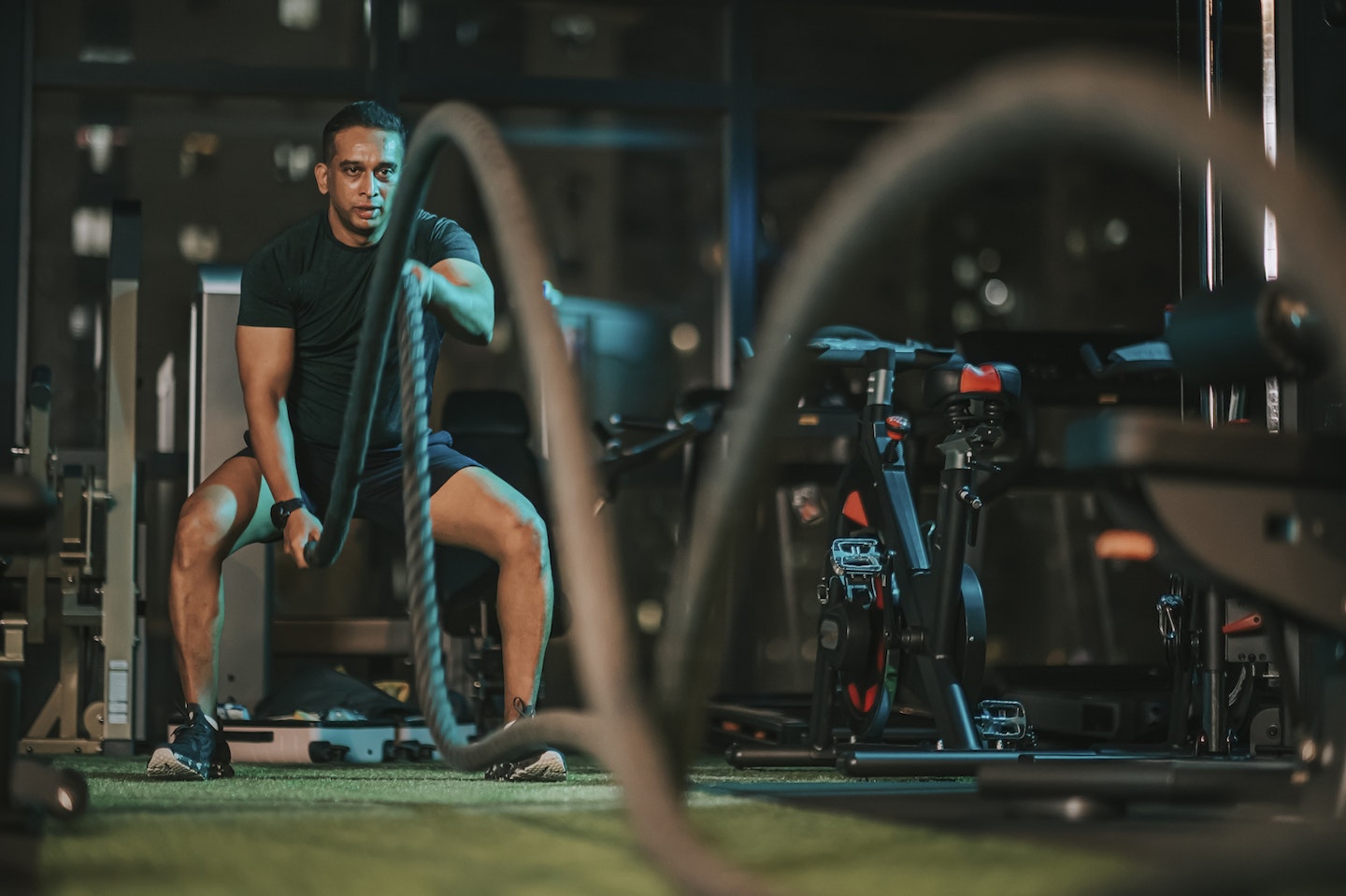
Anaerobic exercise involves short bursts of intense physical activity during which the body's demand for oxygen exceeds the oxygen supply available. In contrast to aerobic exercise, which relies on a continuous and steady supply of oxygen to sustain activity, anaerobic exercise does not depend on oxygen for energy production. Instead, it primarily relies on energy sources stored in the muscles.
Examples of anaerobic exercise include resistance training, such as weightlifting, and explosive exercises, such as sprinting and high-intensity interval training.
A deeper look at anaerobic exercise
Key takeaways
• Anaerobic training enhances the performance of the ATP-PC and lactic acid anaerobic energy systems by allowing them to create energy faster and for longer.
• Anaerobic training is swapping short periods of high-intensity exercise with more extended periods of complete or active rest. The work-to-rest ratio can range anywhere from 1:3 to 1:12.
The details
Anaerobic exercise enhances the anaerobic energy system, which is the process that helps our bodies create movement without using oxygen as a predominant fuel source.
Our muscles need energy to work and have different ways of getting it during exercise. First, the ATP-PC system is a quick but short-lived energy source that lasts about 10 seconds. This system uses ATP and creatine phosphate stored in our muscles. This is why some people take creatine supplements, to enhance the amount of free creatine and phosphocreatine available to replenish the system (via the Journal of the International Society of Sports Nutrition).
When that runs out, the lactic acid system kicks in. It relies on glycogen, a stored form of carbohydrates in our muscles, to produce energy. This system is more flexible and can last for about three minutes. However, fatigue sets in if the exercise continues beyond this point as these energy sources get used up. Unlike aerobic energy, these systems can keep us running for hours.
In summary, our muscles have a rapid but short-lasting energy system (ATP-PC) and a slightly slower but more sustainable system (lactic acid) that kicks in when needed. Our body switches between these systems to keep us moving as we exercise.
Athletes with an extremely enhanced anaerobic energy system can move faster with more power, prolong the fatigue that is inevitably felt, and recover much faster.
A developed anaerobic system is hugely beneficial for sports where frequent high-intensity energy bursts are needed, such as sprinters, Olympic weightlifters, and MMA fighters. There's also a crossover into different industries, which proves useful for real-life situations in which this system is activated for intense situations.
Now, the question that comes to mind is, how do we enhance our anaerobic energy?
High-intensity interval training (HIIT)
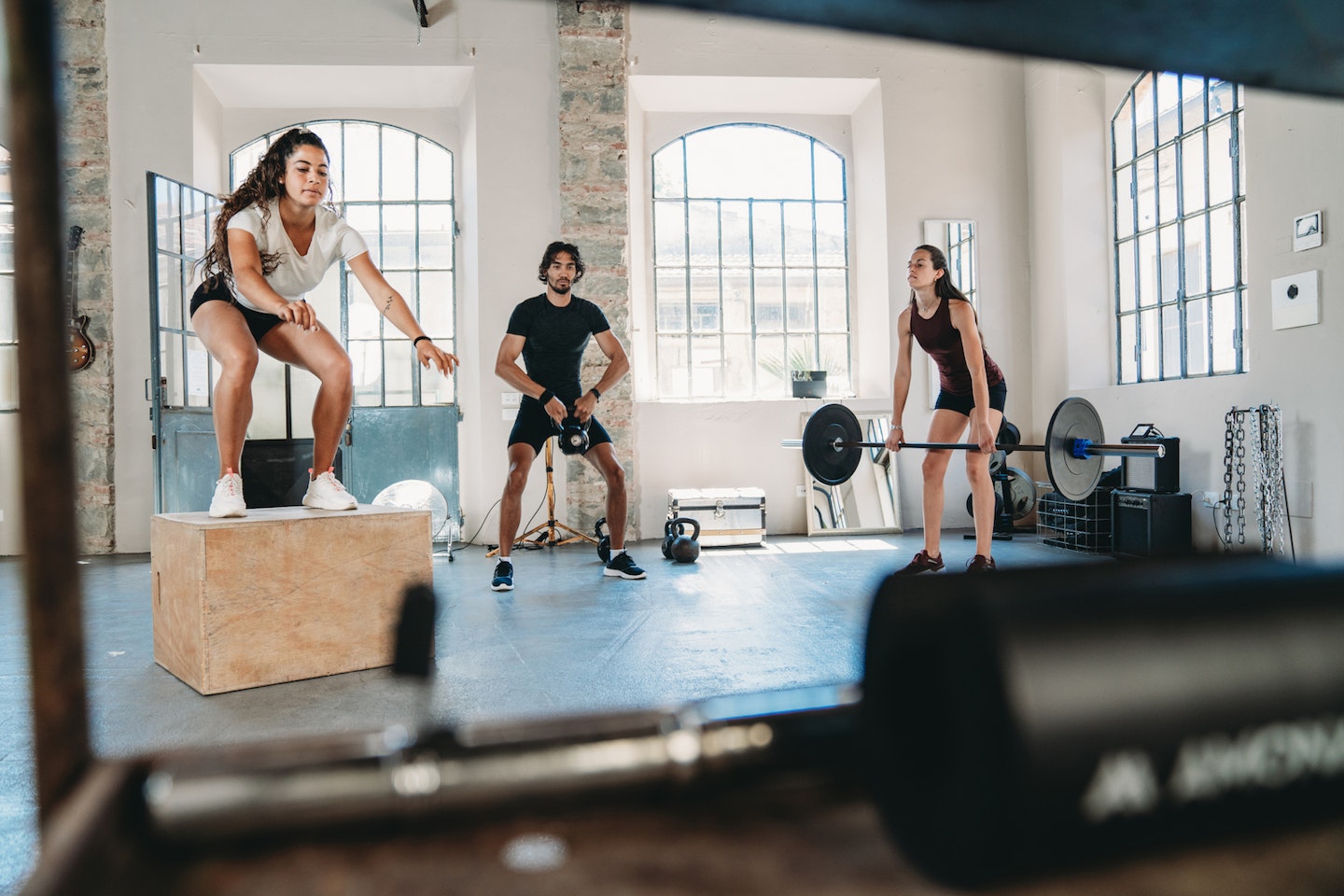
There are several different anaerobic training methods. One that you probably have heard of is interval training; this is when you alternate between exercises and rest periods. It's tailorable to aerobic and anaerobic training. This type of training is often called short or high-intensity interval training. It involves many periods of extremely high-intensity exercise, 80 to 95% of your maximum heart rate, and proportionally much longer periods of complete or active rest.
High-intensity interval training (HIIT) proves effective in targeting both the ATP-PC system and the lactic acid system. As mentioned earlier, the ATP-PC system's capacity is around 10 seconds. You enhance this system by structuring HIIT intervals to be shorter, under 10 seconds, but intense (at 90-95% of your maximum heart rate) and providing longer rest times.
An effective work-to-rest ratio can vary, ranging from 1:6 (one representing workout time and six resting time) and extending up to 1:12. Conversely, if you choose slightly more extended workout periods, spanning from 10 to 45 seconds, with a bit less intensity (around 80-90% of your maximum heart rate) and shorter rest intervals, the emphasis shifts towards the lactic acid anaerobic energy system.
In this scenario, the work-to-rest ratio for these intervals typically falls between 1:3 (one for working out and three for resting). It may extend to 1:5, providing a diverse range to suit various training preferences and goals.
Sprint interval training (SIT)
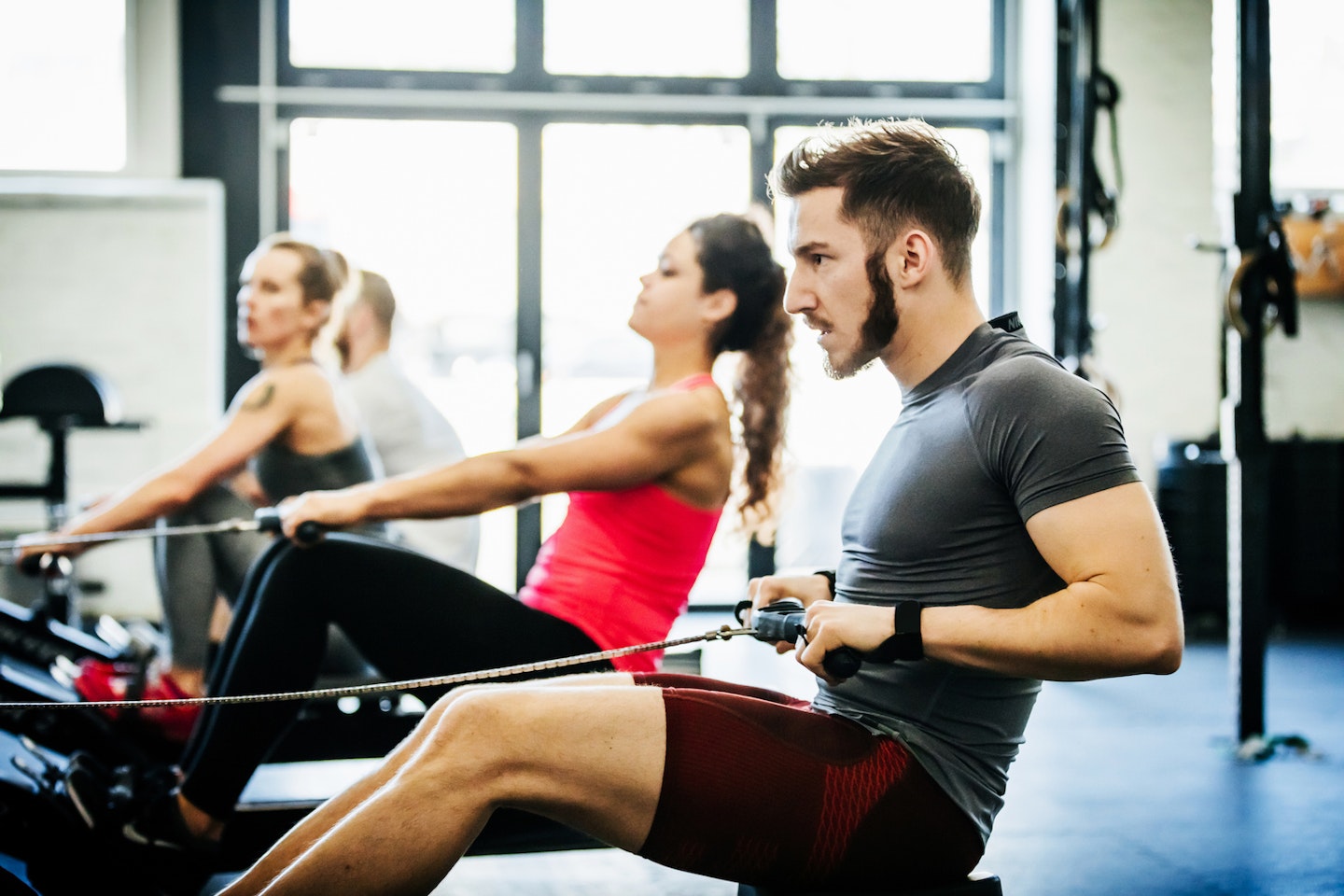
A specific type of anaerobic interval training is sprint interval training or SIT, which involves sprinting periods and low active recovery periods. This type of training can be undertaken on rowing machines, treadmills and exercise bikes and has direct crossover and popularity in the sports of rowing, running and cycling. You work as fast as you can, say for 30 seconds and then you get three minutes of less intense work to get the heart rate down and the energy levels back up.
Polymetric training

Another type of anaerobic training is plyometric training. This type of training enhances explosive strength and power. One way to think about plyometrics is an elastic band; the further back you pull the band, the further it will travel when you release it. The same goes for the muscle; stretching the muscle before you contract it stores extra energy, meaning it can generate a greater force when shortened.
The more you do this training, the faster you'll be able to move between the lengthening and shortening phases. Skills such as speed, agility and power are all enhanced. Also, it's adjustable for specific muscle groups and actions; some examples of plyometric training are squat jumps, explosive press-ups, box jumps, medicine ball throws, overhead ball slams, clapping pull-ups, burpees and power cleans. This type of training can be very demanding on the muscle/muscles, and a high level of current fitness is needed before undertaking this type of training.
Anaerobic exercise and its benefits
Exercise choice
Anaerobic exercise has plenty of exercise choices available to you. This provides for various preferences and fitness levels. High-intensity interval training (HIIT) is a popular choice, involving short bursts of intense activity alternated with rest periods or lower-intensity exercise. Here are some examples:
• Sprinting, whether on a track or stationary bike, challenges the anaerobic energy systems and enhances cardiovascular fitness.
• Weightlifting, including deadlifts, squats, and kettlebell exercises, is another effective anaerobic option targeting muscle strength and power.
• CrossFit workouts incorporate aerobic and anaerobic elements, promoting overall fitness through varied and challenging exercises.
• Circuit training, which combines resistance training with brief rest intervals, is another versatile anaerobic approach.
Ultimately, the diversity of anaerobic exercises ensures that individuals can tailor their workout routines to align with their preferences, goals, and fitness levels. The key is to exert genuine effort, hard graft, and grit. Try not to overcomplicate this type of training. It all boils down to hard work, and referring to the RPE scale, see the below table for a better understanding of anaerobic and aerobic training.
Anaerobic HIIT supports muscle building without interference
Concurrent training involves integrating both resistance and cardiovascular exercises into a unified programme. A common misconception suggests that traditional cardio could obstruct muscle-building efforts, a phenomenon known as the 'interference effect'.
While the precise mechanisms remain unclear, one theory proposes that endurance training prepares muscles for prolonged, low-intensity activity, whereas resistance training entails explosive, short-duration efforts.
In contrast, HIIT aligns closely with the principles of resistance training, fostering harmonious adaptations. HIIT's intensity and work-to-rest ratio closely parallel those associated with weightlifting, minimising potential conflicts between the two training methods.
As an illustration, the level of intensity and the prescribed work-to-rest ratio in an interval training session, such as 30 seconds on followed by 90 seconds off, closely mirrors the parameters of lifting your 10-rep max with the same rest period of 90 seconds.
Anaerobic workouts improve key health parameters
Although diverse forms of exercise play a crucial role in overall health improvement, the accessibility of HIIT training stands out, making it an attractive entry point for those seeking to boost their well-being.
Scientific students show the impacts of HIIT training; they consistently reveal positive outcomes for cardiovascular health. These encompass enhancements in VO2 max, improvements in cholesterol levels, effective blood sugar management and positive influences on blood pressure.
Numerous studies firmly show that the health of the heart's left ventricle is crucial for overall cardiovascular health. People who engage in anaerobic or aerobic training have the best heart function.
Please note: If you have high blood pressure or any other medical condition, speak with your GP/doctor before performing any HIIT.
Anaerobic workouts are enjoyable
While a lengthy run or traditional steady-state cardio might give you an endorphin boost (and if that's your preference, go for it), it can also become quite repetitive, especially when performing a 60-minute workout inside on a treadmill.
In contrast, anaerobic exercise is notably challenging and will truly test your limits when executed correctly. From my experience working as a strength and conditioning coach, I have noticed that individuals who find pleasure in weightlifting often lean towards HIIT instead of less intense forms of cardio, but that has been my own observation; I am sure some would disagree with the statement.
To make cardio feel less like a routine, consider integrating modified strongman equipment, such as pushing and pulling weighted sledges/prowler, battle ropes, slam balls, yokes, log press, axle bar, and kegs, or participate in fitness classes within a group setting. This adds variety and makes the entire experience more engaging and social.
Additionally, HIIT allows for diverse exercise routines, preventing boredom and keeping your workouts fresh. The constant variation in movements and intensities ensures that each session is unique, making staying motivated and committed to your fitness journey easier.
HIIT provides versatility in any location
The effectiveness of HIIT lies in its emphasis on training intensity rather than relying on a particular cardio or resistance machine. This adaptability renders HIIT suitable for scenarios where equipment options are limited. HIIT effortlessly accommodates diverse environments, whether you find yourself in a hotel gym with basic cardio equipment or prefer incorporating bodyweight exercises like high knees or burpees.
The straightforward nature of these exercises, coupled with their minimal skill requirements, facilitates effective training and alleviates concerns about mastering intricate techniques. This accessibility ensures you can engage in a potent workout regardless of your surroundings, making HIIT a versatile and convenient exercise option for individuals with varying fitness goals and preferences.
HIIT maximises results in minimal time
Contrasted with steady-state cardio, HIIT achieves comparable calorie expenditure and associated health benefits within a notably shorter duration. For instance, a 30-minute HIIT session, encompassing a warm-up and a cool-down, can produce outcomes equivalent to more extended periods of conventional cardio exercise. Exceeding this duration poses challenges in sustaining the requisite high-intensity effort for HIIT.
The sustained intensity inherent in HIIT guarantees optimal efficiency, making it an ideal choice for individuals with tight schedules seeking to maximise the effectiveness of their workouts without compromising on results. This time-efficient approach underscores the appeal of HIIT for those aiming to achieve fitness goals while navigating the constraints of busy lifestyles.
Rate Of Perceived Exertion (RPE) Scale explained
The different types of cardio are identifiable based on training intensity (how hard you work); you can use the table below to help identify how hard or easy it is to train for such methods in aerobic and anaerobic training.
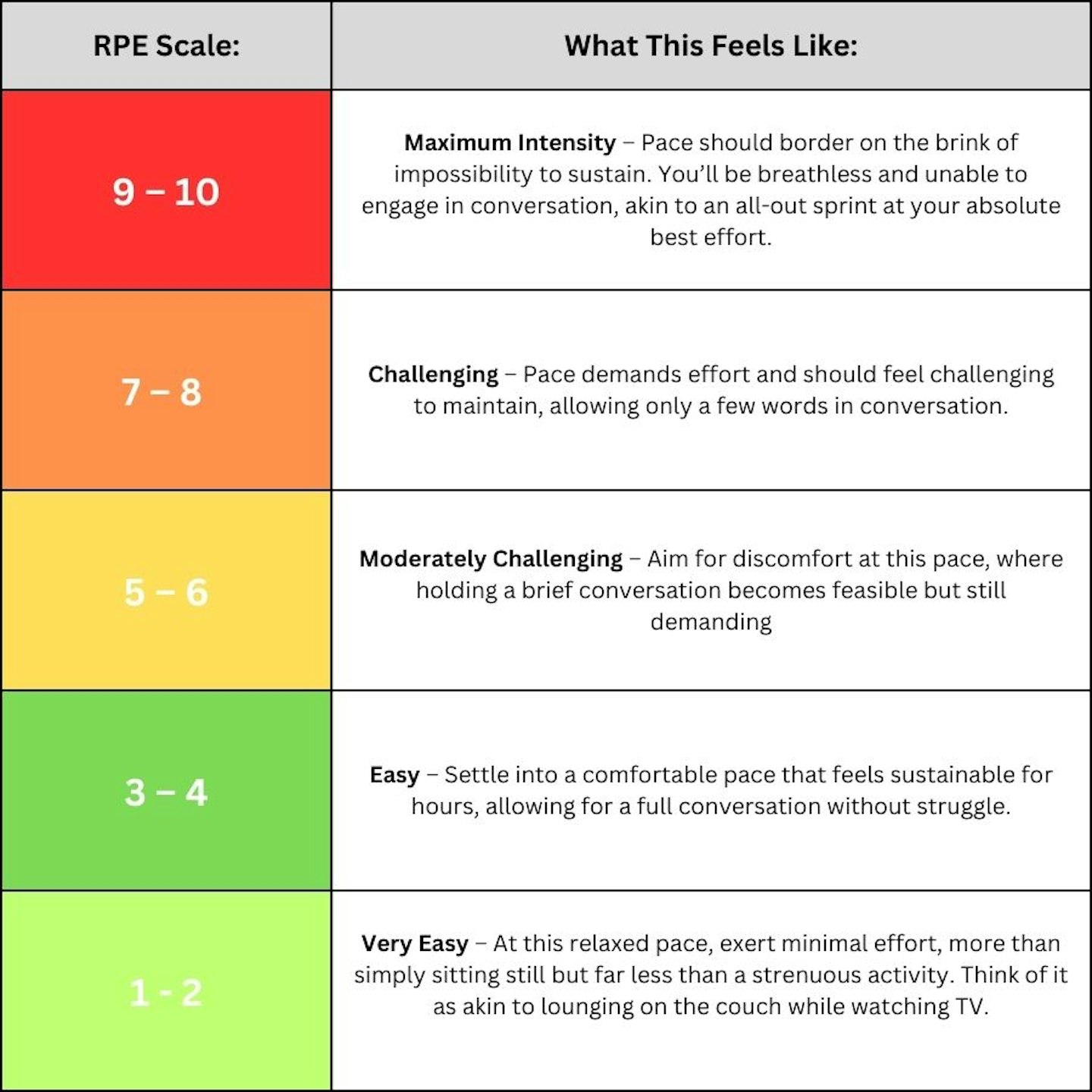
Low-intensity steady state (LISS)
Sustained low-intensity exercise with an RPE of one to four for prolonged durations, such as engaging in a 30-minute walking session on an inclined treadmill.
Moderate-intensity steady state (MISS)
Sustained moderate-intensity exercise with an RPE of five to six for prolonged durations, such as a 5km run.
High-intensity interval training (HIIT)
Involves alternating brief bouts of high-intensity exercise with an RPE between seven and 10 with less intense recovery intervals with an RPE of one to four, for example, alternating between sprinting as fast as you can, 100% effort or close and walking.
Unravelling the cardio puzzle
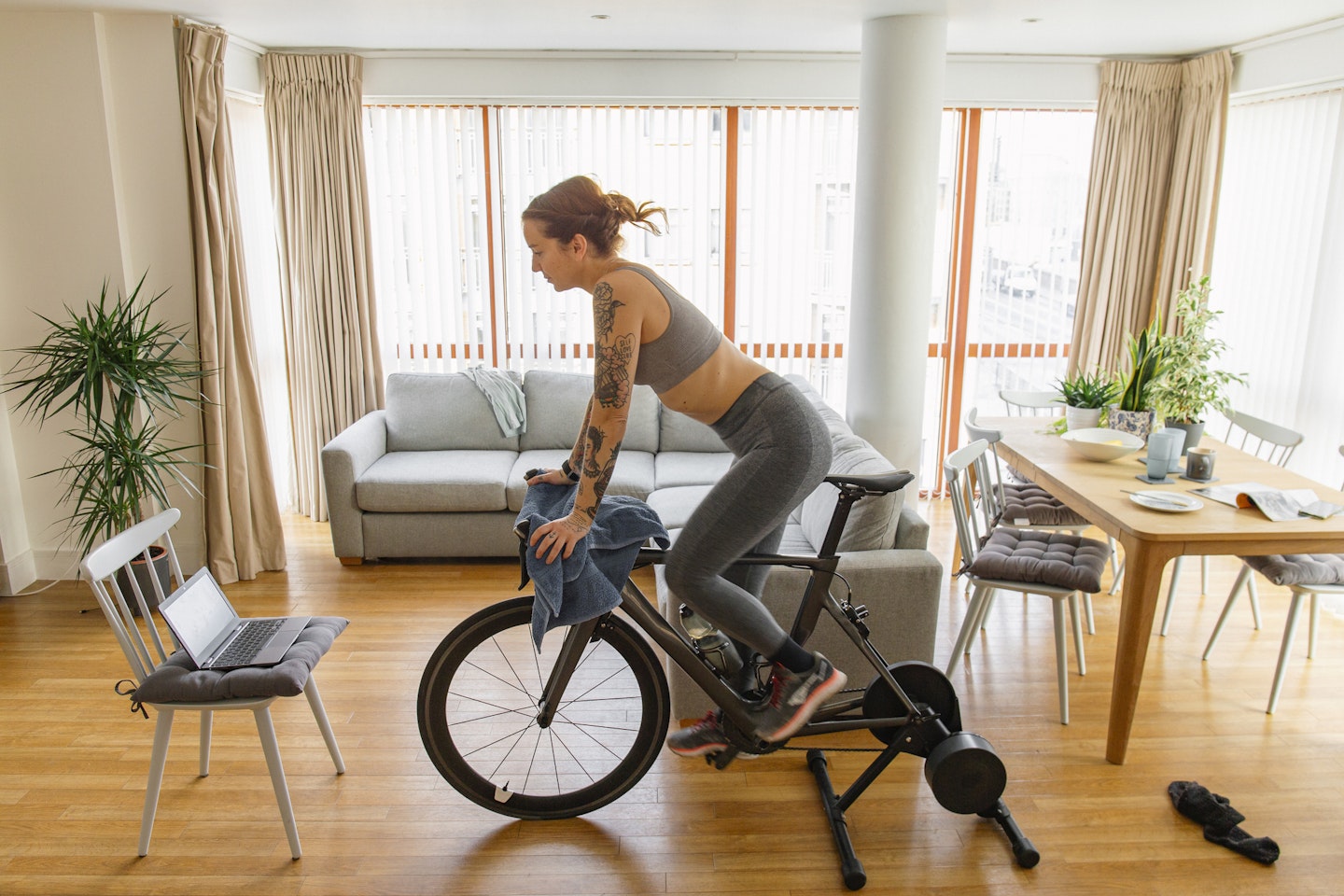
In general, cardiovascular exercise is vital for overall health, yet its impact on achieving an improved body composition is often undervalued. The majority of individuals need clarification about the true essence of cardio.
Suppose you mistakenly consider aerobic exercise and cardio interchangeable terms or entertain the idea that engaging in cardio might lead to weight gain or muscle loss. In that case, further exploring and reading about the subject is crucial.
A comprehensive understanding of the genuine benefits, proper application and the core meaning of 'cardio' demands revisiting the basics, mainly since numerous self-proclaimed health and fitness industry experts have spread widespread confusion.
Cardiovascular health
The cardiovascular system is paramount to our well-being, demanding consistent attention. Comprising the heart, veins, and blood vessels, it encompasses three systems:
• Pulmonary - exchanges oxygen in the lungs, bringing blood to get oxygen and returning it to the heart.
• Systemic - Sends oxygenated blood to the body, bringing back deoxygenated blood to the lungs for oxygen.
• Coronary - Supplies blood to the heart muscle for its health and proper functioning.
Cardiorespiratory fitness
Cardiorespiratory fitness involves the ability of both the respiratory and circulatory systems to deliver oxygen to skeletal muscles during physical activity. This attribute benefits an exercise regimen and can lead a robust and gratifying life.
LISS Cardio vs MISS vs HIIT
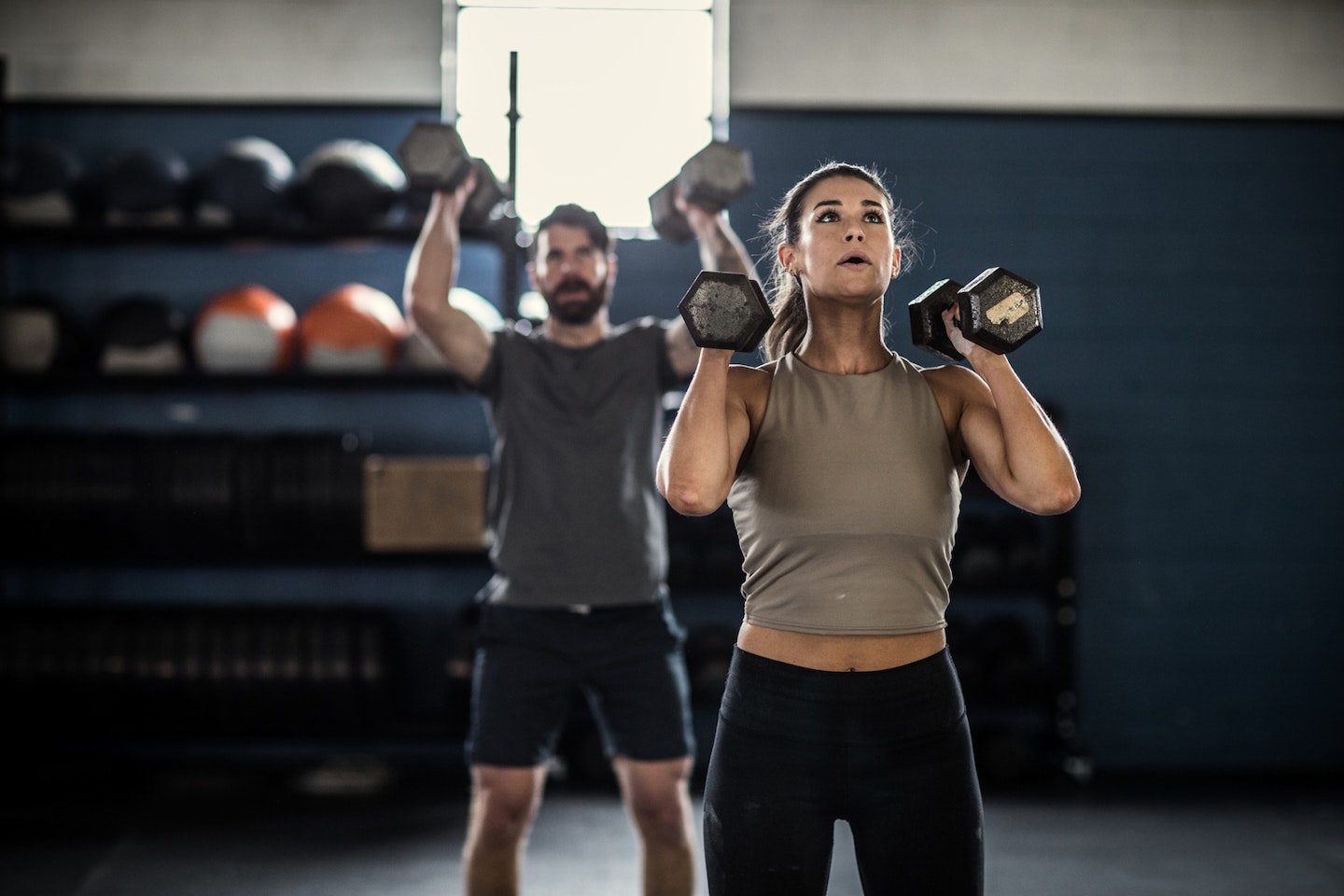
LISS (Low-Intensity Steady State Training): LISS, MISS and HIIT present varied formal cardio options with distinct intensity levels that significantly influence their compatibility with resistance training. Starting with LISS, its lower intensity doesn't inhibit recovery or hinder performance in resistance workouts.
Within a training programme, LISS primarily serves the purpose of burning additional calories. For example, a practical application includes a 10-minute treadmill walk before engaging in resistance training, contributing to calorie burn and serving as an effective mental and physical warm-up.
MISS (Moderate Intensity Steady State Training): In the case of MISS, a crucial consideration is the body's specific adaptation to the chosen training type. The challenge emerges because resistance training and MISS impose conflicting demands on the body. Resistance training conditions muscles for explosive efforts with heavy weights over short durations (anaerobic), while MISS conditions muscles for prolonged, lower-intensity efforts (aerobic). Limiting the amount of MISS can be a justifiable strategy to address this conflict.
HIIT (High-Intensity Interval Training): HIIT's high-intensity nature and the balance between work and rest closely align with resistance training, fostering complementary adaptations instead of conflicting ones. For example, sprinting intensely for 30 seconds followed by a 90-second rest period mirrors the effort of lifting your 10-rep max and then resting. This similarity highlights how HIIT seamlessly integrates with resistance training, offering a more harmonious approach to fitness.
Note the limited recovery capacity with MISS and HIIT: Your capacity for recovery from training has its constraints, and both MISS and HIIT contribute to the overall stress imposed on your body by exercise.
My recommendation:
Incorporating cardio after resistance training is advisable when both are done on the same day. However, for optimal results, consider completing cardio workouts on days separate from resistance training, especially if they're HIIT or MISS. LISS cardio is unlimited, as it doesn't sufficiently challenge your body to impede recovery or workout performance.
Simon Diamond is a contributor to What’s The Best with over a decade of expertise in fitness, nutrition and wellbeing. A former bodybuilder and fitness model winner, Simon holds multiple World Records for muscular endurance and strength titles.
Subscribe to the What’s The Best Newsletter to keep up to date with more of the latest reviews and recommendations from the rest of the What’s The Best team.
